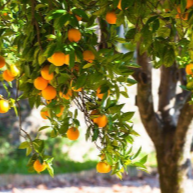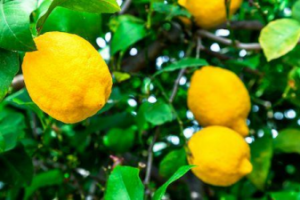By: Michael Ryan, ASU Food Systems graduate student.
It’s not by accident that the history of Kuechel Farms, a large citrus grower in Yuma, Arizona begins in a town called Orange. His family is largely responsible for creating the ubiquitous orange groves that sprawled across the town and county that would later bear that fruit’s name. The lessons he learned from the rise and fall of his family farm in Orange, California may be the very thing that saves his current citrus farm in Yuma, Arizona.
In the late 1800s, Mark Kuechel’s great-grandfather moved from Germany to an area of southern California that was petitioning to be called Richland. The area was known for its dates, grapes, and pig farming. As more migrants poured into the small town, and as they began growing similar crops, the result was a lowering of market prices due to overproduction. This increased competition and decreased profit led Mark’s great grandfather to make the decision to rip out his date trees and, instead, plant oranges which were not common in that area at the time. In fact, his farm was the first orange grove in town and soon his oranges began making good money. So good, in fact, that other farmers quickly began replacing their crops in favor of orange groves.
When it was determined that the name “Richland” was already taken by another town in the northern part of the state, orange groves were so important to the local economy that the town and county decided to officially change their name to “Orange”. This citrus boom is often referred to as ”the second gold rush” and it helped spur the planting of millions of orange trees throughout southern California.
Over the years, however, as populations grew and land became more expensive, increasing costs and decreasing access to water led many farmers to sell off their orange groves. Mark watched his family legacy go from his great-grandfather being the first orange farmer in Orange to his father being one of the last.
In 1975, when his family moved to Yuma, Arizona, citrus acreage was at an all-time high in the state, with around 80,000 acres in production, largely in Maricopa and Yuma counties. So his family planted lemon trees along with other crops like peaches, alfalfa, cotton, and celery. With a single lemon tree producing between 500 and 600 pounds of fruit annually, the initial returns were good. But much like California, now it was Arizona’s turn to experience increased urban development and competition for water that has similarly impacted the number of citrus acres in the state, reducing it to below 13,000 acres today. Lemons are still the leading citrus fruit grown in Arizona, although production is less than a quarter of where it had been in the 1970s.
Rather than selling off his farm or land, Mark leveraged his knowledge and experience as a fourth-generation farmer, turning to conservation practices to help ensure a future for his farm, the citrus industry, and the distinct water-issues that affect Arizona farmers. In addition to cement-lined ditches to reduce evaporation and leakage, as well as laser-leveling his land to reduce inefficiencies in flood irrigation, his farm also integrates 100% water usage with a 93% efficiency rating, which is substantially higher than the industry average of around 60%.
Mark is also heavily invested in advocacy as a means of supporting farmers and creating positive change throughout the industry. In addition to being the owner and operator of Kuechel Farms, he serves as Vice President of the Arizona Association of Conservation Districts (AACD) where he will be President in July, 2022. He also serves on the National Association of Conservation Districts (NACD) where he is Chairman of the Southwest Region including Arizona-New Mexico-Nevada-Utah-Colorado-Wyoming. In addition to his work in conservation, Mark is also on the Invasive Species Committee and the National Resource Policy Committee in Arizona.
It is this kind of effort and dedication to the sharing of knowledge and best practices that will hopefully create a more long-term and sustainable citrus industry in Arizona. Although Yuma won’t be changing its name to “Lemon” anytime soon, by learning from the generational lessons from his family farm in Orange, Mark is creating his own legacy that will impact citrus growing in Arizona for years to come.
On behalf of the entire 2021 ASU Food Policy and Sustainability Cohort, I would like to thank Mark Kuechel for generously offering his time and knowledge so we could learn more about his family farming history, the many environmental, global and association impacts on Arizona farming in general and citrus farming in specific, and how Kuechel Farms and Yuma fit into the larger agricultural story of US and global agriculture.
This blog is part of a series from the December 2021 Arizona immersive component of the MS in Sustainable Food Systems Program. Students toured the state, meeting with farmers, ranchers, entrepreneurs, government staff, and non-profit leaders.


